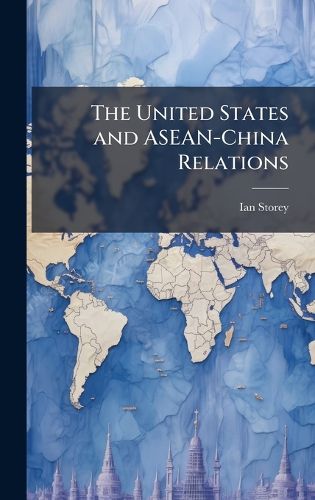Readings Newsletter
Become a Readings Member to make your shopping experience even easier.
Sign in or sign up for free!
You’re not far away from qualifying for FREE standard shipping within Australia
You’ve qualified for FREE standard shipping within Australia
The cart is loading…






While the overall security situation in Southeast Asia is something of a mixed bag, with grounds for both optimism and pessimism, one of the most encouraging trends in recent years has been the development of ASEAN's relations with major external powers. Relations between China and ASEAN in particular have demonstrated a marked improvement over the past decade, thanks to a combination of burgeoning economic ties, perceptions of China as a more constructive and responsible player in regional politics, and Beijing's "charm offensive" toward Southeast Asia. Overall, the development of ASEAN-China relations poses few security challenges to the United States today: good relations between China and ASEAN enhance regional stability, and a stable Southeast Asia is clearly in America's interests, especially with Washington focused on events in the Middle East. However, although ASEAN-China relations are very positive, this does not necessarily mean the United States is losing influence in Southeast Asia, or that ASEAN members are "bandwagoning" with China--in fact, they are hedging by keeping America engaged and facilitating a continued U.S. military presence. While ASEAN-China relations are relatively benign today, in the future several sources of potential friction could create problems in Sino-U.S. relations: these are Taiwan, Burma, and the South China Sea dispute. This monograph examines each of these scenarios in turn.
This work has been selected by scholars as being culturally important, and is part of the knowledge base of civilization as we know it. This work was reproduced from the original artifact, and remains as true to the original work as possible. Therefore, you will see the original copyright references, library stamps (as most of these works have been housed in our most important libraries around the world), and other notations in the work.
This work is in the public domain in the United States of America, and possibly other nations. Within the United States, you may freely copy and distribute this work, as no entity (individual or corporate) has a copyright on the body of the work.
As a reproduction of a historical artifact, this work may contain missing or blurred pages, poor pictures, errant marks, etc. Scholars believe, and we concur, that this work is important enough to be preserved, reproduced, and made generally available to the public. We appreciate your support of the preservation process, and thank you for being an important part of keeping this knowledge alive and relevant.
$9.00 standard shipping within Australia
FREE standard shipping within Australia for orders over $100.00
Express & International shipping calculated at checkout
While the overall security situation in Southeast Asia is something of a mixed bag, with grounds for both optimism and pessimism, one of the most encouraging trends in recent years has been the development of ASEAN's relations with major external powers. Relations between China and ASEAN in particular have demonstrated a marked improvement over the past decade, thanks to a combination of burgeoning economic ties, perceptions of China as a more constructive and responsible player in regional politics, and Beijing's "charm offensive" toward Southeast Asia. Overall, the development of ASEAN-China relations poses few security challenges to the United States today: good relations between China and ASEAN enhance regional stability, and a stable Southeast Asia is clearly in America's interests, especially with Washington focused on events in the Middle East. However, although ASEAN-China relations are very positive, this does not necessarily mean the United States is losing influence in Southeast Asia, or that ASEAN members are "bandwagoning" with China--in fact, they are hedging by keeping America engaged and facilitating a continued U.S. military presence. While ASEAN-China relations are relatively benign today, in the future several sources of potential friction could create problems in Sino-U.S. relations: these are Taiwan, Burma, and the South China Sea dispute. This monograph examines each of these scenarios in turn.
This work has been selected by scholars as being culturally important, and is part of the knowledge base of civilization as we know it. This work was reproduced from the original artifact, and remains as true to the original work as possible. Therefore, you will see the original copyright references, library stamps (as most of these works have been housed in our most important libraries around the world), and other notations in the work.
This work is in the public domain in the United States of America, and possibly other nations. Within the United States, you may freely copy and distribute this work, as no entity (individual or corporate) has a copyright on the body of the work.
As a reproduction of a historical artifact, this work may contain missing or blurred pages, poor pictures, errant marks, etc. Scholars believe, and we concur, that this work is important enough to be preserved, reproduced, and made generally available to the public. We appreciate your support of the preservation process, and thank you for being an important part of keeping this knowledge alive and relevant.